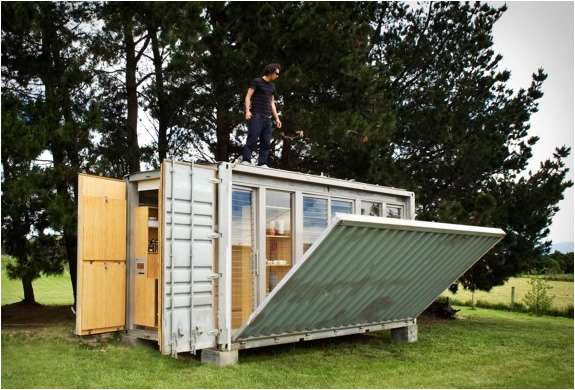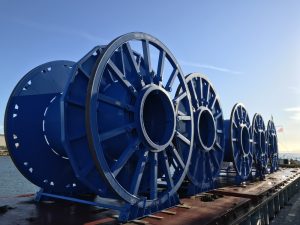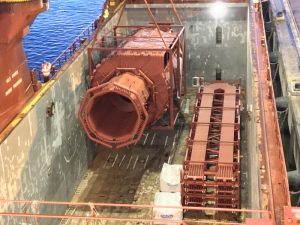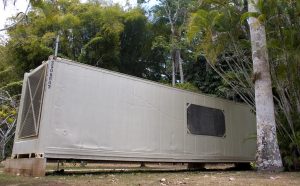On Wednesday 11th March the new Chancellor of the Exchequer, Rishi Sunak, the man who controls the UK purse strings , gave his first budget. This sets out his plans for the UK’s coming financial year and beyond. Unusually for a conservative government it was very big spending one. In fact one of the biggest for any Conservative party budget in the past thirty years. While there was a considerable amount give to the NHS to assist with handling the Coronavirus, there was additionally some significant sums of money going into infrastructure projects which will directly impact the UK logistics sector.
- For the 10th year in succession fuel duty to be frozen
- Red diesel subsidies which is used in non-road vehicles will be scrapped for most sectors by 2022.
- More than £600bn is set to be spent on roads, rail, broadband and housing by the middle of 2025
- £2.5bn will be available to fix potholes and resurface roads in England over five years
- There will be £27bn for motorways and other arterial roads
The freezing of fuel duty once again will certainly be appreciated by road hauliers across the country, it is the changes to red diesel which is going to cause some concern in the transport industry. While the rail industry is excluded from the proposals, it is going to appear to have an impact on reefer operators as they will now have to use standard diesel and this is going to have large cost impact on operating these type of containers and trailers.
The money made available for fixing potholes which is problem which appears to be getting worse is a significant investment and will hopefully help get the issue under control. The vehicle operators will especially welcome this as they are constantly incurring repair costs due to the increased wear and tear caused by potholes. However it would be useful if the councils where able to make more effort in ensure that road contractors when the conduct road works, put the road back in durable condition and not start falling apart after 6 months of traffic.
All the £600 billion infrastructure projects have not yet been announce. However probably the biggest will be the HS2 Railway Line which comes in at £100 billion at current costings. Once completed it should free up the congested southern section of the West Coast Mainline Railway and allow for more general freight services. The £27 billon of new roads mentioned is part of the the previously mentioned figure. Apparently this will included a new tunnel for the long discussed A303 near Stonehenge which will certainly help road hauliers in this region once completed. It will hopefully mean that the City of Lincoln will finally get its badly needed ring road completed. The council is awaiting approval for financing for the final section. Once completed it will have taken over 70 years from planning to completion. The irony is that the road will probably be operating at capacity almost straight away so the council will have to apply for further funds to increase capacity. Hauliers in the area will be no doubt be pleased when it is finally completed. Trucks who go East to West and no longer have to trek around the busy northern half to get to the other side and going North to South no longer means passing through the city centre.
Tags: 2020 Budget


Some of these tiny homes are used as off grid homes constructed in the rural countryside and are fully self sufficient in water and electric. They designed to have as small as possible environmental impact in the location they are placed. Other tiny homes are in towns and cities and there owners live in them all year round. With clever designing they are fitted out with all the modern conveniences and impressive view inside. You can often not belive that this was once a shipping container
Of course all these homes are fixed to one location. But if you are looking for a mobile container home then there plans for these as well. A design from atelierworkshop which is not yet in full production is based on one container. It is made to be sufficient for a small family and unlike other home designs keeps all of its container parts. When the owners want to move to another location, the container is just packed up on it self and just looks like and normal shipping container. It can then be loaded and moved on any container fitted trailer to its new location. While maybe not quite as efficient or as easy to use compared to a caravan, it is certainly a unique design for the versatile shipping container.
Tags: IN A PREVIOUS LIFE
Our continuing articles on how the logistics industry is actively reducing its environmental impact. Despite some individuals and the media portraying that we are in climate emergency and no industry is attempting to help solve the problem this not an accurate picture. One of the logistics organisations which has been leading environmental awareness is the International Maritime Organisation (IMO). Way back in 1988 they introduced new rules regarding the disposal of waste at Sea. As of 2019 there where over 150 Countries signed up to the MARPOL Annex V waste regulations. These regulations are constantly being reviewed and updated. There have been 12 amendments with the last one coming into force in March 2018.
The rules regarding waste disposal applies to all vessels both passenger and cargo who have a gross tonnage of 100 or more and/or those who carry more than 15 people at any one time. The rules also apply to any fixed or floating platform in a sea or ocean. Vessels are required to have a management plan which should cover the following:
- Minimising the amount of waste produced
- Effective methods to collect and store the waste so it can not be accidently discharged
- Processing the waste so where possible any waste which is recycled is separated out
- Process describing how the waste should be finally disposed of
All ports in countries signed up to the waste regulations have to provide suitable waste disposal facilities for all sea going vessels. Some ports are now providing separate bins to encourage recycling. Going beyond the current regulations are ports in a many developed countries banning waste wash water being dumped into the ports waters and they have to be taken away for proper treatment. This helps to keep the local environment much healthier.
Possibly one of the greatest threats the environment faces is not a changing climate but the growing issue of micro plastics entering the environment and the human food chain. While discharging waste plastic directly into the ocean is banned under the current regulations. There is still a significant amounts of plastic entering the ocean through lost equipment and other accidently releases. Both macro plastics (for example, large plastic items such as plastic bags, water bottles and fishing gear) and micro plastics (small plastic particles generally under five millimetres in size) are now found everywhere in the marine environment and is having a harmful effect on marine life and biodiversity, as well as negative impacts on human health.
Unfortunately while the situation is improving, lack of awareness of the issue has been shown in studies resulting in discharges of plastics continuing into the worlds oceans which should have been properly disposed of. In order try and tackle this significant environmental threat the follow actions have been proposed by the IMO:
- A study on the sources of marine plastic litter from ships.
- Investigating the availability of waste facilities at ports and if the are fit for purpose.
- Making marking of fishing gear mandatory this would be done in cooperation with the Food and Agriculture Organisation
- Encourage fishing vessels to report the loss of fishing gear;
- Setting up a process to return retrieved fishing gear to shore facilities;
- Look at the current training given to fishing vessel personnel and other seafarers to see how it can be improved to ensure awareness of the impact of marine plastic litter;
- Create a scheme which ensures the compulsory mechanism to declare loss of containers at sea and identify number of losses
- Promotions to enhance general public awareness of the issue and what is being doing to resolve it
- Working with other organisations including the FAO and UN
It is surprising that there is no current regulation to report and recover cargo which has been lost over board. Lost containers often float just on the surface and present a significant risk of damage to other ocean going vessels if they collide with them. Considering this a weekly event often through bad weather and rough seas it is often left to the vessel owners, charterers or insurance companies to clean up the lost goods and equipment. Depending on the costs involved in the incident only the more responsible shipping operators take an active roll despite it can be seen as a positive PR move. It is certainly one area the industry should improve, with the results benefiting both maritime wildlife and ocean vessel operators.
Tags: ENVIRONMENT

The Coronavirus is continuing to be the number one topic and how it is continuing to spread around the world,with country after country reporting new cases. In several countries panic buying has occurred resulting in supermarkets and wholesalers struggling to be able to restock shelves. This is despite there is currently no issue of food shortages in any developed country. It is the actual panic buying which is the cause of empty shelves in supermarkets. The financial stock markets are taking a considerable battering with all markets across the world overall down this week. The Dow Jones in New York has been experiencing the biggest point swings in its history. This is likely to continue for at least the next few weeks as investors continue to asses the fallout from the virus and how much of a slowdown it is going to cause to the world economy. In the UK Flybe is the first airline to go bust due to the Coronavirus. The airline was already facing serious financial issues and the sudden down turn in passengers was enough to push it into administration. Unfortunately as the virus continues to effect country after country, it will probably not be the last airline to fail.
Within the logistics industry things are beginning to very slowly return to normal in China. A lot of Chinese logistics offices are now fully staffed and able to process bookings. However container yards in most of the major ports are very full with both full containers and empty containers as there continue to be a backlog. Better news is the ports though are now operating fairly normally. Shanghai has reduced the number of health checks for lorries coming in and out of the city. It though looking that shipping lines will have cancelled around 25% of all Chinese sailings by the end of March. Most lines saying that even if the demand fully rebounds they will not be restoring the cancelled shipments as the vessels will be out of position.
As China at the moment slowly begins to return to normal, attention moves to the knock on effects on other ports around the world. Several of the major USA ports on the west coast expect a reduction in the next few weeks to create the worst quarterly drop in container through put since the 2007 financial crisis. Currently apart from Italy there are no movement restrictions on freight in the EU so vessels which arrive at a port are getting discharged without any issues and containers which are at the port for export are being loaded. While the virus is being contained and only a limited number of people are infected this situation is unlikely to change but is very fluid.
The one logistics sector which is still being hit hard is airfreight. With a lot of airlines cutting flights not just to China, but to other countries it is becoming a struggle for forwarders to locate an operational service and then once located actually be able to book space on it. A lot of supply chains are running short of components and while they may now finally have manufacturing restarted and containers moving to a sea port, for shipments to Europe there is still another 4-5weeks to get the goods finally delivered. All these buyers then are turning to airfreight, and if they cannot get the components shipped we are going to see a lot of USA and European manufactures are going to have to shutdown temporary which will have a further impact on the worlds economy.
Tags: CORONAVIRUS, Transport Delays
When importing goods into the UK you need to have a harmonised customs commodity code. This is to calculate customs duties and to know if you require any licences for that particular product. Due to the tariff system being complicated it is often very difficult for the first time importer and even experience ones to pick the correct code to use. Anybody who has looked at the online trade tariff available at the UK government site will see that is a complex document with hundreds of pages, covering every conceivable product. Most clearing agents can help you find a suitable code for your product, though importers should always remember this can only be given as a recommendation. It is possible that the even an experienced agent is unsure of which is the best tariff code code to use for that product. The importer at this point then needs to apply for a binding tariff information decision directly from HM Customs and Excise. This is a legally binding decision in the UK (and until December 2020 the EU) which is valid on all imports and exports for the next 3 years.
One you have obtained the decision you can then use this to look up the commodity code in the trade tariff. This will tell you:
- The basic duty rate for imports
- If VAT is applicable for imports
- Depending on the country of origin if a preference rate (reduced duty) is applicable
- Any licences required
- Any other restrictions or requirements
The government notice number 600 goes in to further details on what you need to have before applying and how to apply. You can apply directly by following this link which will take you directly to the HM login page. https://secure.hmce.gov.uk/ecom/login/index.html. This service is free from the HM Customs and any website which charges for this service should be avoided as only HM Customs can issue the official decision. The customs duty liability team will require from you a detailed packing list and photographs of the intended product to be imported or exported. Any additional information such as brochures and manuals are also beneficial when submitting a request. In some cases the customs duty liability team may require you to send them a sample of the product so they can properly assess it.
As an importer if you are using a broker to clear you goods remember to pass this information on to them. If you are unsure how to read the trade tariff ask your broker to check it for you. Ensure you ask the broker before the shipment leaves the loading port to allow you time in case you need to obtain any additional documentation. HM Customs always has the right to right to you and withdraw the decision. Importers should be aware that is not possible to retrospectively apply the decision to customs declarations already made. The binding decision is only applicable to the importer named and is not transferrable to another one. In this case a new application would have to be made.
Tags: CUSTOMS CLEARANCE
Break bulk shipments and Out of Gauge generally refers to the movement of non containerisable cargoes. In the modern world driven by complex supply chains the majority of dry goods are containerised, however this still leaves a wide range of cargoes that cannot fit into a standard container. These shipments are referred to as Out of Gauge cargoes often shortened to the term OOG.
At AJF we have been involved in moving break-bulk shipments around the world since the company was founded. The company’s joint owner is a break bulk specialist having over 40 years of experience, and is one of the top specialists in this sector in Europe. Often AJF is the first port of call for both shippers and other forwarders when planning cargoes and we have been involved in shipments moving all over the world. When issues have arisen with break-bulk movements our experience in this field has proven invaluable for our clients.
When AJF is evaluating shipping an OOG cargoes we evaluate the best shipping equipment or method to use. For some cargoes it may be possible to move them on a flatrack or opentop container. For larger cargoes and non standard ones such as those which are over length, width, height or weight then we would may arrange to have the cargo moved using a part charter or full charter of a vessel. We would assess if the vessel need to be geared (have its own onboard cranes) or not, depending on the loading and discharge ports. It is not much use having a vessel turn up and find out the local cranes can not handle the shipment. Depending on the shipping terms and what we are contracted to cover then we would check out the specifications of the ports being called at. This would included maximum weight which can be placed on the quay. You do not want the cargo overloading the quay and causing it to collapse, which has happened in the past.
AJF has recently been contracted to move vehicles from the UK to Dubia, UAE. Initially it was planned to moved these on flat racks. The size of the vehicles meant that it was going to be a very tight fit to ensure that once the vehicles had been secured to remained in gauge and avoid damage when being loaded. We therefore looked at other options and it was decided that the most cost effective and safest route was moving them using a RO/RO vessel from Southampton. All the cargo was move successfully and without any damage.
A second case study involved another forwarder which had arranged a charter of a vessel to move an oil project. However the vessel operators got into difficulties and the forwarder was unsure of his liabilities and how to get the goods to the final destination. We were asked to look at the situation and were able to devise a course of action to ensure the cargo was not going to be abandoned. The cargo was finally delivered successfully.
If you have a out of gauge shipment you are looking to move from the USA, Europe and Asia to another part of the world, or need representation to manage the loading or discharge, contact us today and with our in depth knowledge we will be able to help.
Tags: BREAKBULK, OUT OF GUAGE
With the exception of the Coronavirus outbreak, probably one of the biggest topics of the conversation in the world is the environment. While activists such as Greta Thunberg have being campaigning about the lack of action, the logistics sector has been getting on with reducing not only its carbon footprint but its overall impact. Organisations environmental awareness has resulted in more and more of them reviewing their processes and seeing if they can be made more sustainable. They have realised that this can actually have an effect on their profit/loss bottom line. Examples of this are companies reducing their packaging requirements or using products which will rapidly decompose rather than plastics. The increasing awareness of the environment has led to continuing improving polices from the various legislative bodies which oversee transport operations world wide. The international maritime organisation (IMO) has introduced various legislation to reduce the environmental impact of shipping on the world. Two of the major ones are ships’ waste and the low sulphur fuel regulations for vessels.
- IMO Marpol V waste regulations aim to control the dumping of waste at sea. Over 150 countries have now signed up to this and it has reduced the general dumping of waste. There is still an issue with plastics entering the food chain from the accidental loss of equipment at sea. The IMO has proposed an action plan to tackle this issue and hopefully significantly cut it down once adopted.
- IMO Sulphur regulations. Most ships sailing on open seas currently burn a very low grade of fuel which is very polluting. The IMO proposed that all ships should no longer burn this fuel with a high sulphur content. This was accepted by the countries signed up to the IMO and was introduced in 2020. It is anticipated this will make a significant impact on saving human life from respiratory issues. Further reductions are planned in subsequent years.
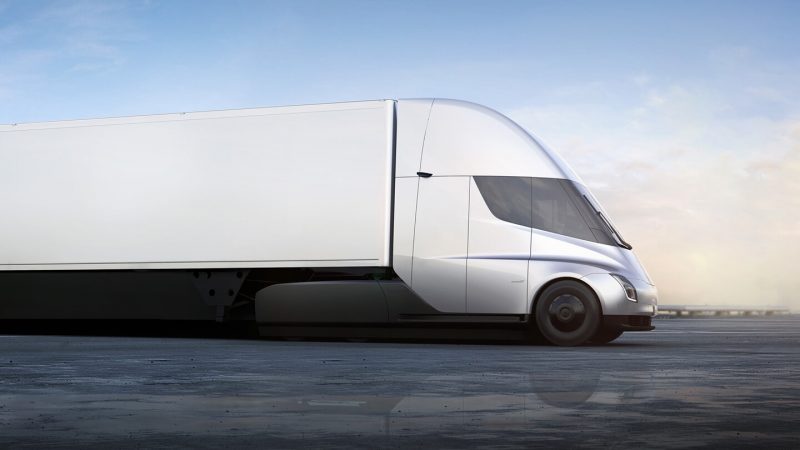
The 2018 UK Greenhouse Gas Emissions report showed that the transport sector in 2018 was responsible 33% of all CO2 emissions. The report did state that emissions had fallen by 9% since the 2007 peak, despite continued growth in the sector. Driven partly by the continued advancement of environment regulation, such as the EUR emission standards which commercial vehicles follow which is currently on EUR6 standard. It is expected in order for vehicles to comply with the EUR7 standard vehicle suppliers will need to have a hybrid or alternative clean engine. The EUR7 standard is to be introduced in the next few years
Distribution firms are actively purchasing zero emissions vehicles already for the last mile deliveries. The use of routings software is now common place to ensure the most efficient route is used when a vehicle is doing multiple deliveries and collections. As battery technology improves and falls in price within the next few years heavy goods vehicles will move over from being diesel to electric powered.
Tags: ENVIRONMENT
The Coronavirus is continuing to cause issues to global supply chains with many of the large manufactures around the world issuing warnings of potential hit to full year profits. This has highlighted how important China is in supply chains across the planet today. Many companies have urgently started to try and move manufacturing to other countries including Vietnam and India. Few of these countries have the capacity to available to meet the sudden demand, and even ones which can it is going to be many weeks before these products are able to get the end consumer.
In the UK one online furniture supplier warns that while they have sufficient stock due to the delays in factories restarting up they are facing the a break in their supply chain. They rely on a constant supply of containers from China manufacturers. They have additionally stock to cover the Chinese new year shutdown, however they expect to run out of the most popular items within the next few weeks. If they have to stop selling certain items not only does it mean a loss of sales, but also a drop off in Amazon, Ebay and Google rankings. As a result once the supply chain out of China is reestablished, it will take time to get sales back to previous levels. The owner does not expect to have to lay off any staff at the moment this may become required if the crisis continues.
Transport operators are not fairing much better. Both shipping lines and airlines (cargo and passenger) have lost large amounts of money over the past few weeks. Many shipping lines have added blank sailings into their schedules to prevent their vessels getting delay at Chinese ports. Airlines have cancelled virtually all services and are not accepting bookings till the end of March for many Chinese destinations. Additionally with the virus spreading to other countries many Airlines are reducing their services to these areas. Easyjet which is low cost operator in the UK, is taking drastic action to reduce it costs in the face of falling passenger numbers, these include pay freezes, reduction of administration costs and offering staff unpaid leave.
Despite all the bad news, for China the official line is amount of new cases being reported is dropping and if news reports are accurate then virus now seems to be effecting more people outside of China. This is reflected in the current port operations in the Port of Ningbo, China. This port has over 24000 registered truck drivers, at the height of the crisis it had less than a thousand actually working. This figure has now reason to over 7000 by the end of last weekend. This means container through put has gone from virtually nothing to 13000 twenty foot equivalent (TEU) units being moved per day at the start of the week. Other Chinese ports are beginning to clear through their container backlogs.
Shippers need to be aware that as factories begin to return to full operation and there is a rush to get goods to the ports, space will become a premium on the vessels and as result rates will be expected to rise and containers will sit on the quay longer than normal while awaiting a vessel with space. Price issues and space availability is effecting airfreight imports and exports as there is considerable reduction on available flights currently. Booking space as early as possible is currently the best recommend action for shippers.
Tags: CORONAVIRUS, OCEAN FREIGHT, Transport Delays
While reefer containers are commonly found plying the oceans between continents moving all kinds of products these particular reefer containers are helping to saving several species of frog. In 2010 the Maersk shipping company donated six reefer containers to the Smithsonian Institution and their partners working in Panama City, Panama to help protect and breed various indigenous frogs which were facing extinction. The reefer container have been heavily adapted to create a controlled and protected area. In this area individual environments where made specific to a particular frogs requirement where they could be observed and managed with the hope that the this would help to ensure their on going survival in the wild.
The images below show the outside of the converted reefer containers, and the inside with the individual controlled environments for the frogs laid out.
Both photos are credit of the Smithsonian Institution
Tags: IN A PREVIOUS LIFE
Transshipment in logistics occurs when cargo either individual pallets or full containers are moved from one transporter to another while being moved from the collection place to the delivery place. This practice is frequently undertaken by shipping lines in order to maximise the cargo loading of their vessels. Transhipping containers allows shipping lines to serve smaller ports which the large ocean vessels (often called the Mother Vessel) are unable to enter due to their draft,length or width. These are called feeder services and allow the small ports to connect to other ports all over the world. For container ocean freight services one of the biggest transshipment port is Singapore in the Far East. Other major transshipment ports are Rotterdam in Europe which has many feeder services calling at UK ports , Jebel Ali in the Middle East and Hong Kong in China.
Transshipment is a regular feature of multi-model shipments. Containers moving from an inland destination may initially move from a inland terminal to a port by rail, they are then transshipped onto a vessel and taken to the nearest destination port. Next they are transhipped onto a train, and sent by rail to the destination terminal.
For shippers moving containers which are going to be transhipped it does not mean any additional paperwork. Shippers should be aware that ocean transit times will normally always be longer compared to a direct service as the container has to be off loaded to quay and then wait for the feeder vessel to arrive at the port before being reloaded. Depending on how close the port is to the final destination this additional transit time may be offset as the final on-carriage by road or rail will be shorter. For shippers the main benefit for a transshipment service from a main country port to another main port is cheaper freight rates. So for low value, or non time sensitive shipments these routes are worth considering in any supply chain planning.
Co-loaders who consolidate part cargoes from many shippers may transship cargoes at strategic ports locations around the world. This allows the co-loader to increase efficiency and reduce transport costs for shippers. A co-loader may ship from 6 ports spread around the two different regions. The cargo from each individual port is insufficient to fill a full container for the other five ports. So the co-loader has a central port where all the cargo is consolidate. Now the co-loader has sufficient cargo to fill a container for each port. Neither the shipper nor the consignee is effected is still going being moved as contracted, but all parties benefit from the lower costs. Shippers should always ensure their cargo is suitably packed to ensure the shipment withstand being handle multiple times.
[This is part of logistics help articles]
Tags: shipping, TRANSSHIPMENT
